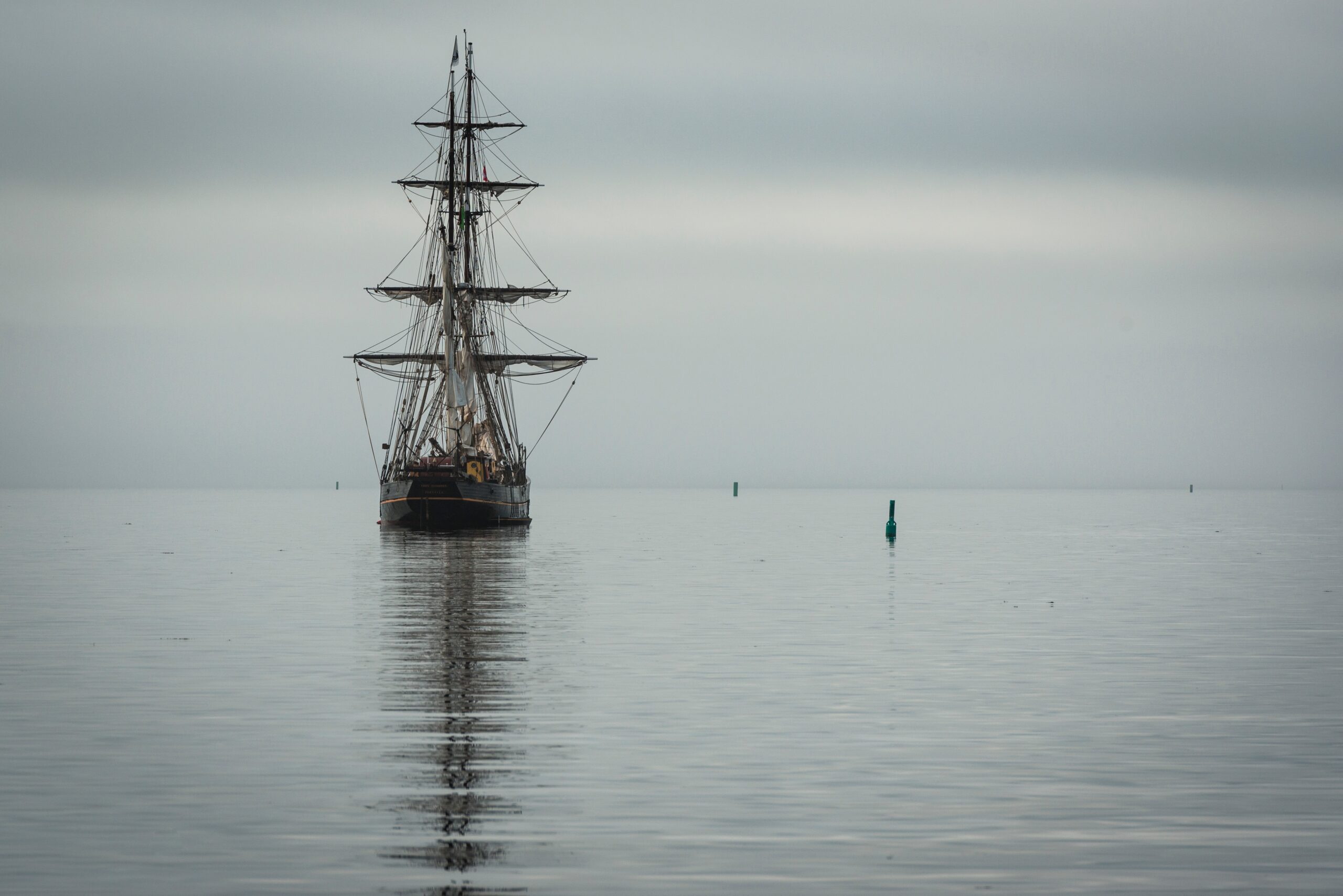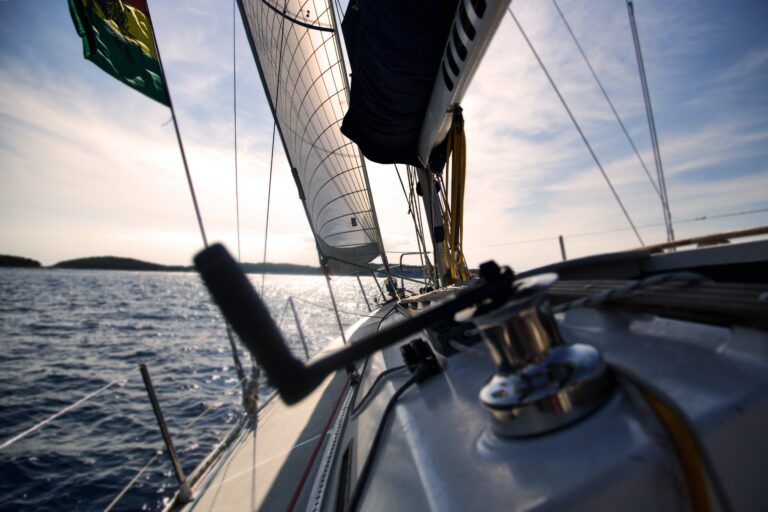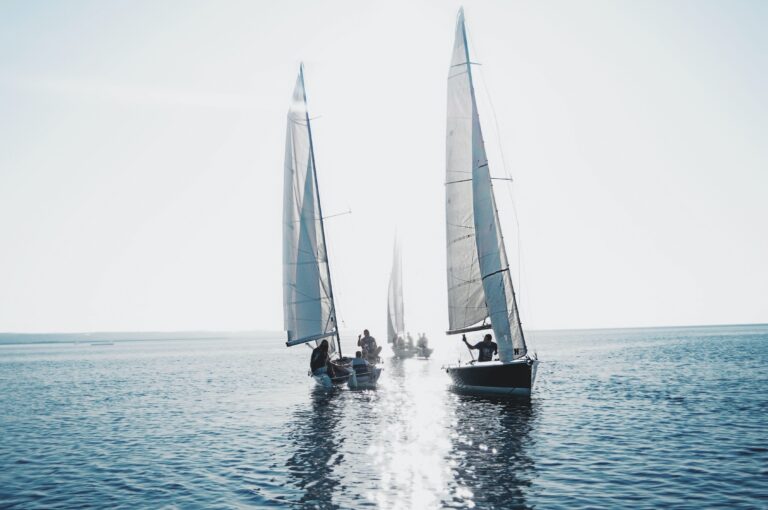When it comes to sail boat designs, there is a wide array of options available, each with its own unique characteristics and advantages. From the shape of the sails to the number of masts and the type of keel, every aspect plays a crucial role in determining a sailboat’s performance, stability, and manoeuvrability. In this comprehensive guide, we will delve into the fascinating world of sail boat designs, exploring the various elements and their significance.
Table of Contents
Sail Shape
The sail shape is a fundamental aspect of sail boat design, directly impacting its speed, windward performance, and maneuverability. There are several types of sail shapes, including:
1. Bermuda Rig:
The Bermuda rig is a widely used sail shape known for its versatility and performance. It features a triangular mainsail and a jib, offering excellent maneuverability and the ability to sail close to the wind. The Bermuda rig’s design allows for efficient use of wind energy, enabling sailboats to achieve higher speeds. The tall, triangular mainsail provides a larger surface area for capturing the wind, while the jib helps to balance the sail plan and optimize performance. This rig is commonly found in modern recreational sailboats and racing yachts. Its sleek and streamlined appearance adds to its aesthetic appeal, making it a popular choice among sailors of all levels of experience.
2. Gaff Rig:
The Gaff rig is a classic sail shape that exudes elegance and nostalgia. It features a four-sided mainsail with a gaff and a topsail, distinguishing it from other sail designs. The gaff, a horizontal spar, extends diagonally from the mast, providing additional area for the mainsail. This configuration allows for a taller and more powerful sail, making the Gaff rig particularly suited for downwind sailing. The Gaff rig offers a traditional aesthetic and is often found in vintage and classic sailboats, evoking a sense of nostalgia for a bygone era of maritime exploration. The distinctive shape of the Gaff rig, with its graceful curves and intricate rigging, adds a touch of timeless charm to any sailboat that dons this rig.
3. Lateen Rig:
The Lateen rig is a unique and versatile sail design that has been used for centuries in various parts of the world. It features a triangular sail that is rigged on a long yard, extending diagonally from the mast. This configuration allows for easy adjustment of the sail’s angle to catch the wind efficiently, making the Lateen rig suitable for a wide range of wind conditions. The Lateen rig is known for its ability to provide both power and maneuverability, making it ideal for small to medium-sized sailboats and traditional vessels like dhow boats. Its versatility allows sailors to navigate narrow waterways and make tight turns with ease. The distinctive silhouette of a sailboat with a Lateen rig, with its sleek triangular sail and graceful curves, evokes a sense of adventure and a connection to seafaring traditions from around the world.
Number of Masts
The number of masts in a sail boat design affects its stability, sail area, and overall performance. Let’s explore a few common configurations:
1. Sloop Rig:
The sloop rig is one of the most popular and versatile sail boat designs, favoured by sailors around the world. It consists of a single mast and two sails—a mainsail and a jib. The sloop rig offers simplicity, ease of handling, and excellent performance across various wind conditions. The mainsail, situated behind the mast, provides the primary driving force, while the jib helps to balance the sail plan and improve manoeuvrability. This configuration allows for efficient upwind sailing, as the sails can be trimmed independently to optimize performance. The sloop rig is commonly found in modern recreational sailboats due to its versatility, enabling sailors to enjoy cruising, racing, or day sailing with ease. Its streamlined design and sleek appearance on the water make it both aesthetically pleasing and efficient, capturing the essence of the sailing experience.
2. Cutter Rig:
The cutter rig is a versatile and robust sail boat design that offers excellent performance, especially in challenging weather conditions. It features a single mast and multiple headsails, typically including a larger headsail forward of the mast, known as the cutter rig’s distinguishing feature. This configuration provides a wide range of sail combinations, enabling sailors to adjust the sail plan to suit varying wind strengths and directions. The larger headsail enhances the boat’s downwind performance, while the smaller headsails offer increased flexibility and improved balance. The cutter rig excels in heavy weather, as it allows for easy reefing and depowering by simply reducing or eliminating the headsails. This design is commonly found in offshore cruising sailboats and has a strong reputation for its reliability and seaworthiness. The cutter rig combines versatility, stability, and the ability to handle adverse conditions, making it a preferred choice for sailors seeking both performance and safety on their voyages.
3. Ketch Rig:
The Ketch rig is a sail boat design characterized by the presence of two masts, with the main mast being taller than the mizzen mast. This configuration offers a divided sail plan, providing sailors with increased flexibility, balance, and versatility. The main advantage of the Ketch rig is the ability to distribute the sail area across multiple sails, allowing for easier handling and reduced stress on each individual sail. The mizzen mast, positioned aft of the main mast, helps to improve the sailboat’s balance, especially in strong winds or when sailing downwind. The Ketch rig is often favoured by cruisers and long-distance sailors as it provides a range of sail combinations suitable for various wind conditions. With its distinctive double-mast appearance, the Ketch rig exudes a classic charm and is well-regarded for its stability, comfort, and suitability for extended journeys on the open seas.
Keel Types
The keel is the part of the sail boat that provides stability and prevents drifting sideways due to the force of the wind. Here are some common keel types:
1. Fin Keel:
The fin keel is a popular keel type in sail boat design known for its excellent upwind performance and stability. It is a long, narrow keel that extends vertically from the sailboat’s hull, providing a substantial amount of ballast to counterbalance the force of the wind. The fin keel’s streamlined shape minimizes drag and enables the sailboat to cut through the water with efficiency. This design enhances the sailboat’s ability to sail close to the wind, making it ideal for racing and performance-oriented sailboats. The fin keel also reduces leeway, which refers to the sideways movement of the boat caused by the wind. This improves the sailboat’s ability to maintain a straight course and enhances overall manoeuvrability. Sailboats with fin keels are commonly found in coastal and offshore racing as well as cruising vessels, where stability and responsiveness are valued. The fin keel’s combination of performance, stability, and reduced leeway makes it a preferred choice for sailors seeking speed and agility on the water.
2. Full Keel:
The full keel is a design known for its exceptional stability and seaworthiness. It extends along the entire length of the sailboat, providing a continuous surface that adds substantial weight and ballast. This configuration offers significant advantages in terms of tracking and resistance to drifting sideways. The full keel’s deep draft helps to prevent leeway and allows the sailboat to maintain a steady course even in adverse conditions. Its robust construction enhances the sailboat’s ability to handle heavy seas and provides a comfortable ride for sailors on extended journeys. While full keel sailboats may sacrifice some manoeuvrability, their stability and predictable handling make them a popular choice for offshore cruising and long-distance voyages. The full keel design has stood the test of time and is often associated with classic and traditional sailboat aesthetics, appealing to sailors seeking reliability, comfort, and the ability to tackle challenging ocean passages with confidence.
3. Wing Keel:
The wing keel is a unique keel design that offers a combination of reduced draft and improved stability. It features a bulbous extension or wings on the bottom of the keel, which effectively increases the keel’s surface area. This design allows sailboats to navigate in shallower waters without sacrificing stability and performance. The wings create additional lift and prevent excessive leeway, enhancing the sailboat’s upwind capabilities. The reduced draft of the wing keel enables sailors to explore coastal areas and anchor in shallower anchorages that would be inaccessible to sailboats with deeper keels. The wing keel is particularly well-suited for sailboats in areas with variable water depths or tidal ranges. This keel design offers the advantages of increased manoeuvrability and improved performance while maintaining stability, making it a popular choice for sailors seeking versatility in a range of sailing environments.
Summary
In the vast world of sail boat designs, sail shape, number of masts, and keel types play pivotal roles in determining a boat’s performance and handling characteristics. Whether you’re a recreational sailor, a racer, or a cruiser, understanding these design elements can help you make informed choices when selecting a sailboat.
Remember to consider your specific needs, preferences, and intended use of the boat when choosing a sail boat design. Each design has its strengths and weaknesses, and finding the perfect combination will greatly enhance your sailing experience.
By gaining a deeper understanding of sail boat designs, you can embark on your next sailing adventure with confidence and make the most of the wind’s power.




